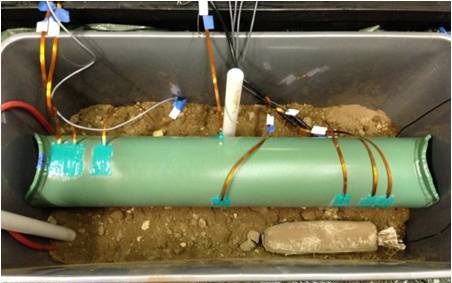Markets > Petrochemical
Overview
Corrosion represents a significant problem for the nearly 500,000 miles of pipelines that transport natural gas, crude oil, and hazardous liquids in the United States. This critical infrastructure cost companies an estimated $100 billion to install and over $2 billion annually to maintain. Maintenance costs associated with these transmission lines involves monitoring, repairing, corrosion mitigation, life assessment, and risk modeling. Incorporating a system capable of directly identifying corrosion on pipelines can produce considerable cost savings by minimizing overall maintenance costs and preventing service interruptions.
Benefits
As demand increases for products commonly transported by pipelines, so too does the cost associated with maintenance. Direct monitoring of electrochemical activity on gathering and transmission pipelines compliments cathodic protection and remote monitoring strategies by sensing oxidation-reduction reactions occurring on pipeline surfaces. This strategy is particularly beneficial with systems that cannot be effectively cathodically protected, such as insulated pipes, above ground installations, pipes susceptible to AC induced corrosion, encased pipes, and compressing stations. Early intervention on these critical structures prevents service interruptions, reduces risk to public safety, and ultimately reduces corrosion-related repair costs.
Example Application
The uLPR has been evaluated on a fusion-bonded epoxy coated natural gas pipeline. Application of an AN110 DAQ node installed on a natural gas pipeline in an environmental chamber is shown below. In this evaluation, eight uLPR sensors were installed at various distances from a 1/8" defect placed in the fusion-bonded epoxy surface of an API 5L ERW Grade-B D.R.L. steel pipe. Sensor installation was accomplished by locally buffing off the fusion-bonded epoxy layer and attaching the sensors to the pipe surface with industrial epoxy. After installation the sensors were covered with an epoxy field patch material. Data gathered during this experiment enabled corrosion activity to be monitored in real-time as it spread from the defect along the pipe surface-epoxy interface. Further, this experiment showed the highly sensitive nature of uLPR sensor measurements allows corrosion to be detected at distance up to 18" from a defect site.

